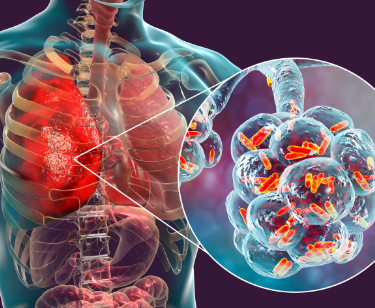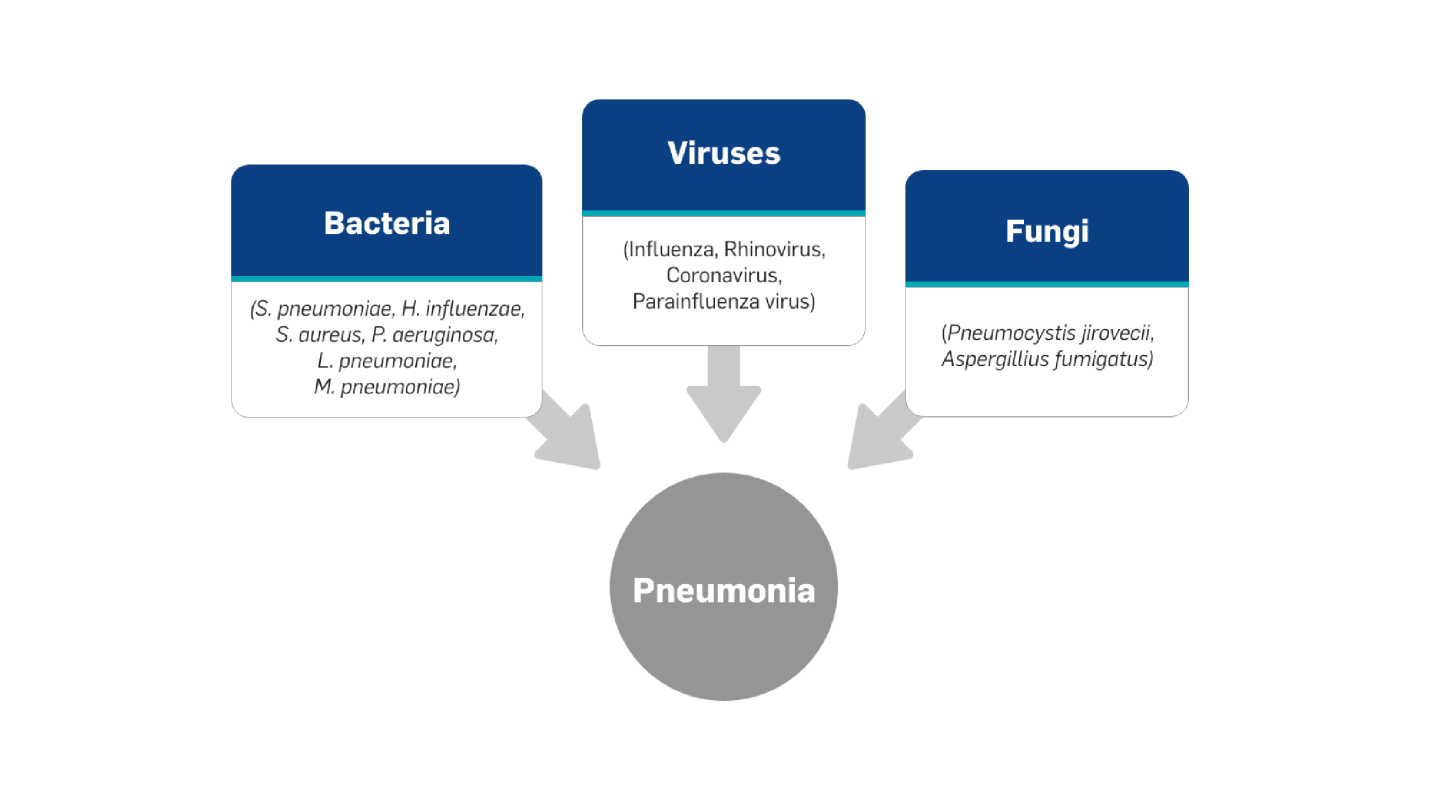Disease Overview
- Pneumonia is an acute infection of the pulmonary parenchyma caused by viral, bacterial, and fungal pathogens, which causes mild to severe illness and can affect people at any age.1-3
- Community-acquired pneumonia (CAP) refers to pneumonia cases that are acquired in the community as opposed to the hospital setting.2
Image

